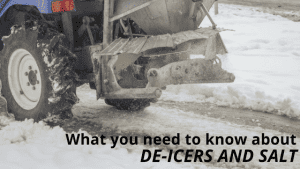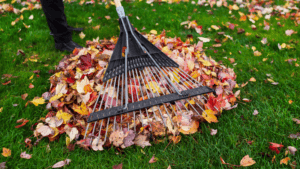
Advantages
- Prevents buildup of ice and snow.
- Great on steps, slopes, walkways and steep driveways as it provides great results and grip and traction.
- Reduces injury from slipping, sliding and falling on ice.
- Salting before and after a storm prevents ice and snow from forming a thick layer and makes it easier to clear snow off the treated surfaces.
Disadvantages
- It can significantly damage plants, grass and trees if it saturates the soil.
- Salt contamination delays bud break, growth and can cause browning.
- Can cause corrosive damage to concrete surfaces, motor vehicles and recreational vehicles.
- Can damage wildlife and lead to food and shelter loss.
- Can damage animals paws and harmful if too much is ingested through eating snow or drinking from puddles.
- Can be harmful to children if swallowed but also if they get it in their eyes causing abrasions to the eye or harming their skin.
- It can possibly lead to poor water quality when it leaches into nearby ponds and rivers which can affect fish and other aquatic inhabitants.
- Can contaminate well water which leads to hypertension in humans and possible increase the risk of cancer.
Prevention
There are ways to prevent salt from harming areas of your property. They are:
- Use de-icers with lower salt content or mixed with other materials such as ash or sand.
- Place burlap, plastic or a snow fence over delicate perennials before snow and ice come.
- Do not stack snow or shovel snow with salt onto plants or grass.
- If contaminated, try applying a layer of gypsum to the soil to displace the sodium with calcium and improve the drainage of the soil.
Tips for using deicing products:
- Purchase the correct blend according to your climatic conditions and average low temperatures so that you will need to use less salt.
- Keep walkways cleared as the snow falls before it becomes ice.
- Pre-treat before the storm so that you will use less de-icer.
- Mixing sand with the salt will allow you to use less de-icer and the sand will give you traction.
- Store de-icer in an airtight container to give you the most effectiveness.
Clearly, you want to keep your walkways safe and clear. There are variations of de-icers available with varying chemical compounds and armed with this information you can make a more informed decision. If you have any questions, we are happy to answer them for you and help you choose the right option to keep you, your family and friends safe this winter.


